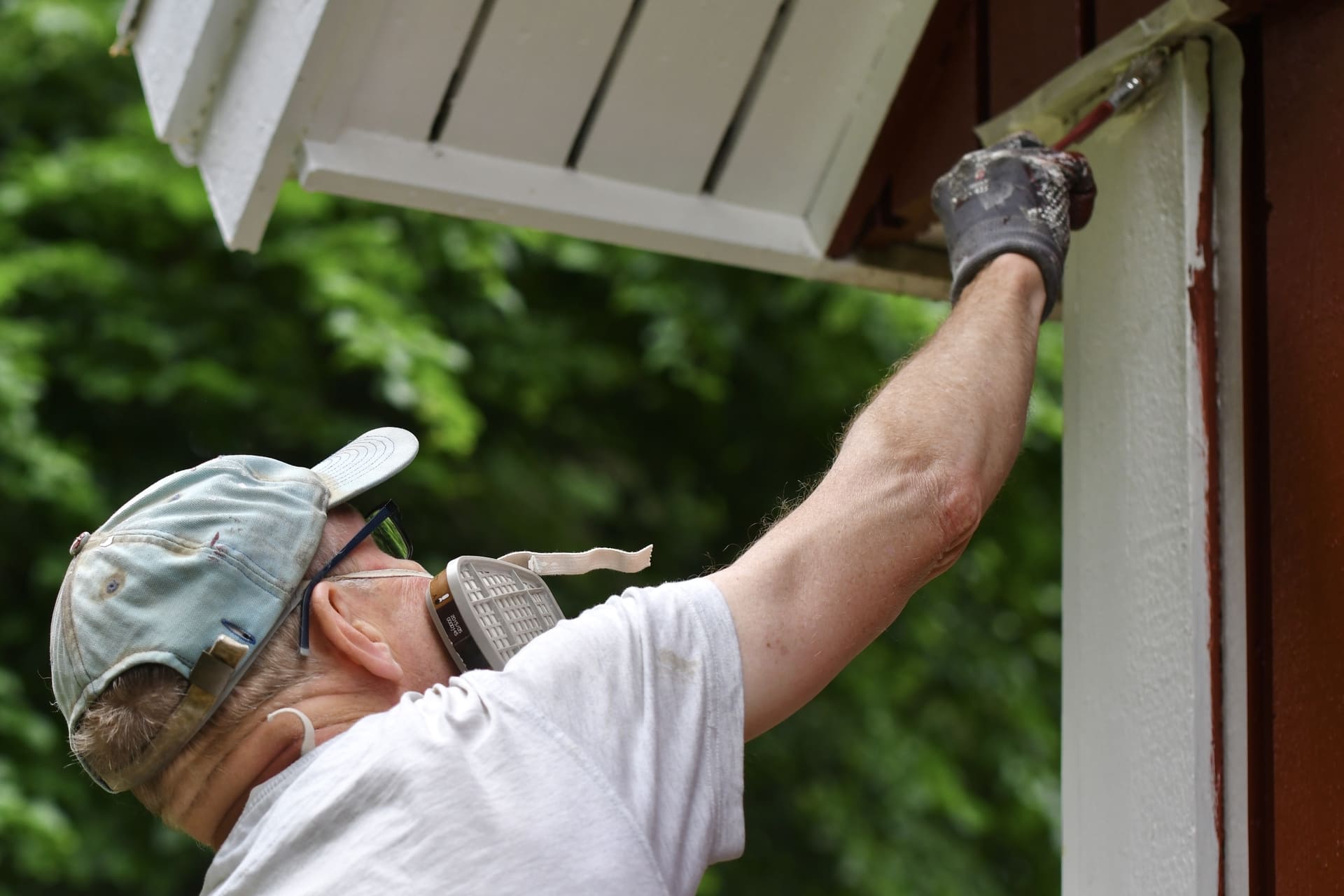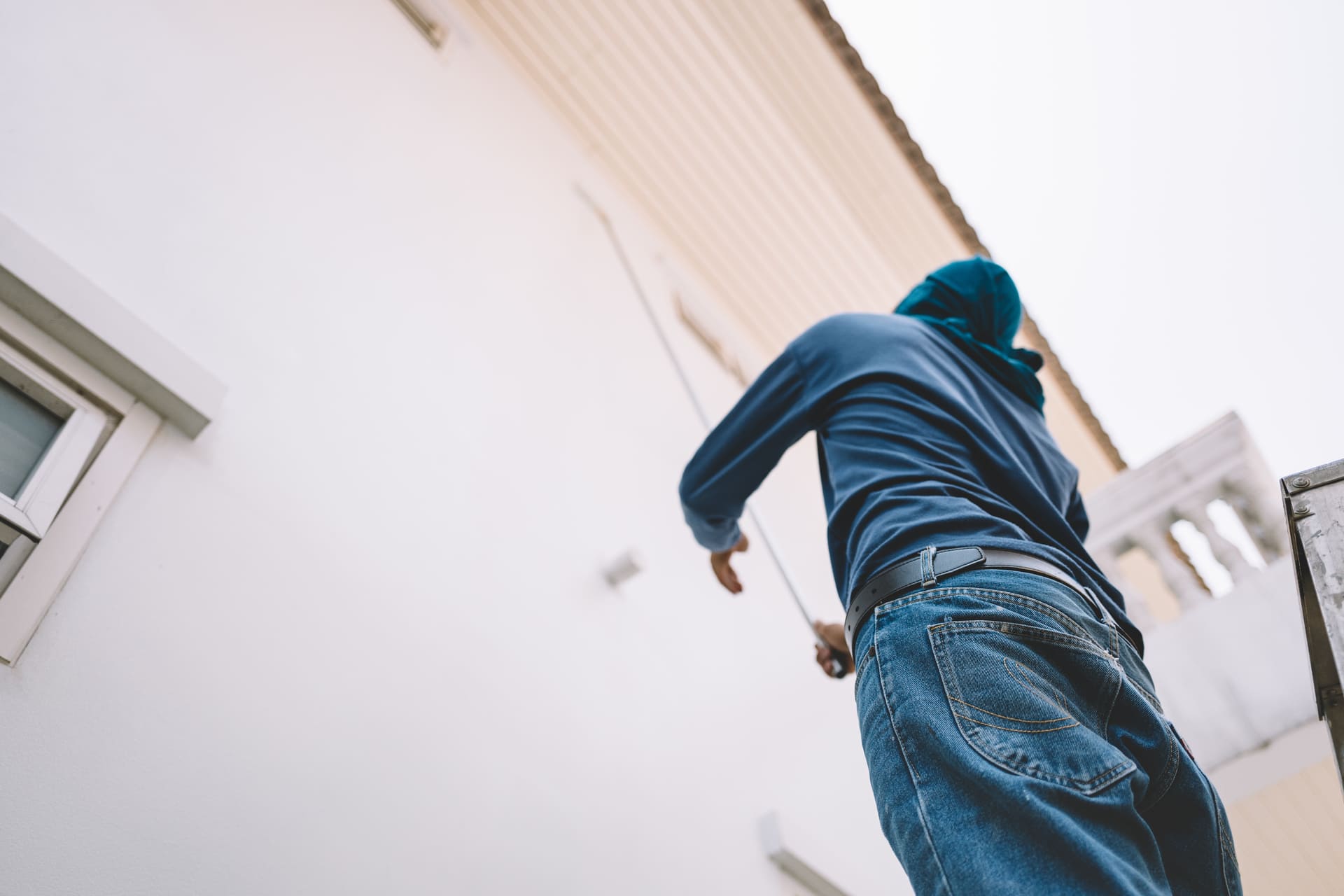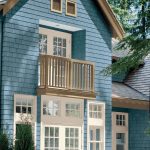
The best time to paint your house exterior in Wisconsin is late spring through early fall, specifically from May through September, when temperatures consistently stay between 50°-85°F and humidity levels remain manageable for proper paint adhesion and curing.
Wisconsin’s changing seasons make timing your exterior painting project especially important. A late spring frost or early fall cold snap can prevent paint from curing properly, while high humidity in midsummer can affect adhesion and finish quality.
At Prairie Exteriors, we’ve spent over 60 years helping homeowners across Madison, Sun Prairie, and South-Central Wisconsin choose the right painting window for lasting results. Our experience ensures your project withstands Wisconsin’s climate and keeps your home looking its best for years to come.
Our exterior house painting in Madison, WI specialists understand Wisconsin’s unique weather challenges and can help you plan the perfect painting timeline.
Best Months to Paint Your House in Wisconsin
Understanding Wisconsin’s seasonal patterns helps you choose the optimal painting window for your home. Each month brings unique advantages and challenges that can significantly impact your project’s success.
- May: Late spring offers Wisconsin’s first reliable warm weather, with average temperatures reaching 60°-75°F. However, late frost risks still exist, particularly in northern areas, and May typically brings frequent rain showers that can delay projects.
- June: Early summer provides some of Wisconsin’s most stable weather conditions, with consistent temperatures and lower humidity levels. This month offers the longest daylight hours for extended work periods, though sudden thunderstorms remain a concern.
- July: Peak summer heat can create challenges, with temperatures often exceeding 85°F and high humidity levels. While the weather is generally dry, extreme heat can cause paint to dry too quickly, affecting adhesion quality.
- August: Late summer continues the warm, dry trend but begins showing more predictable weather patterns. Humidity levels start decreasing, creating better paint curing conditions, though heat remains a factor during midday hours.
- September: Early fall offers Wisconsin’s ideal painting conditions, with moderate temperatures, low humidity, and minimal precipitation. Cooler evenings provide extended working hours without extreme heat concerns, making this many professionals’ preferred month.
- October: Late fall presents the final opportunity before winter, with crisp temperatures and low humidity. However, rapidly dropping nighttime temperatures and shorter daylight hours create challenging conditions that require careful planning.
According to the National Weather Service’s Milwaukee office, Wisconsin’s painting season typically spans 150-180 days annually, with South-Central Wisconsin enjoying the longest favorable periods.
Why Timing Matters for Exterior Painting in Wisconsin

Wisconsin’s unique climate presents specific challenges that make timing critical for exterior painting success. The state’s dramatic seasonal temperature swings, from sub-zero winters to humid summers exceeding 90°F, create conditions that can severely impact paint performance if timing isn’t carefully considered.
Paint adhesion and curing depend heavily on temperature and humidity levels during application and the critical 24-48 hour curing period. When temperatures drop below 50°F, paint molecules don’t bond properly with the surface, leading to poor adhesion. Research from the Wisconsin State Climatology Office shows that Wisconsin experiences temperature fluctuations of 30°F or more between day and night during transitional seasons, making timing predictions crucial.
⚠️ The consequences of poor timing extend far beyond aesthetic issues. Paint failure from improper timing typically requires complete removal and reapplication, often costing 2-3 times the original project expense. Additionally, failed paint jobs leave your home’s exterior vulnerable to Wisconsin’s harsh elements, potentially causing wood rot, moisture damage, and structural issues that can cost thousands to repair.
Ideal Weather Conditions for Exterior Painting
Successful exterior painting in Wisconsin requires specific weather conditions that allow paint to properly adhere and cure. Understanding these requirements helps you identify the perfect painting window for your project.
- Temperature range: Maintain air temperatures between 50°-85°F throughout the application and curing period. Wisconsin’s ideal sweet spot falls between 60°-75°F, providing optimal conditions for both latex and oil-based paints.
- Humidity levels: Target humidity between 40%-70% for best results. Wisconsin’s spring and early fall typically provide these conditions, while summer months often exceed 70% humidity, particularly in the morning hours.
- Wind conditions: Choose days with minimal wind (under 10 mph) to prevent debris contamination and uneven drying. Strong Wisconsin winds can also create dangerous working conditions for ladder work and spray applications.
- Rain considerations: Ensure 24-48 hours of dry weather before and after painting. Wisconsin’s afternoon thunderstorms make morning starts crucial, allowing maximum drying time before potential evening moisture.
| Ideal Conditions | Conditions to Avoid |
| 50°-85°F temperature | Below 50°F or above 85°F |
| 40%-70% humidity | Above 70% humidity |
| Under 10 mph wind | Strong winds above 15 mph |
| 48+ hours dry forecast | Rain within 24 hours |
| Stable temperature overnight | 20°F+ temperature swings |
💡 Consider a Madison homeowner planning to paint in early June. The Prairie Exteriors team reviews the extended forecast and selects a three-day window with 70°F temperatures, 50% humidity, and no precipitation—conditions that allow paint to cure evenly and ensure a lasting finish. By timing the project around these ideal Wisconsin conditions, our experts help homeowners avoid weather-related delays and premature paint failure.
When Is It Too Hot to Paint Outside in Wisconsin
Wisconsin summers can challenge even the best paint jobs—not only because of high air temperatures, but also because of how surfaces respond to heat. While air may register 85°F, sun-facing siding can climb above 110°F, causing paint to dry before it properly bonds.
Rather than focusing on temperature limits alone, professional painters adjust where and when they paint. Prairie Exteriors crews begin work early in the morning or move to shaded sides of the home during peak afternoon heat, ensuring consistent coverage and smooth finishes. This approach helps prevent flash drying and brush-mark formation on wood or fiber-cement siding.
💡 For example, during a 90°F July week in Madison, our team may schedule painting from 6 AM – 10 AM on east- and north-facing walls, then return to west-facing areas the following morning once temperatures stabilize. These timing adjustments maintain finish quality even during Wisconsin’s hottest periods.
Proper planning, surface monitoring, and flexible scheduling allow Prairie Exteriors to achieve professional-grade results—no matter how intense Wisconsin’s summer heat becomes.
Following proper painting rules becomes even more critical during hot weather conditions.
Cold Weather Painting Limitations in Wisconsin
When Wisconsin temperatures drop below 50°F, exterior painting becomes less about product choice and more about timing and preparation. Cold air slows drying, prevents paint from bonding properly, and traps moisture beneath the surface—leading to premature cracking and peeling once temperatures rise again.
Cold-season challenges Prairie Exteriors accounts for:

- Temperature drops after application: Even if it’s 55°F during the day, nighttime lows below 40°F can stop paint from curing.
- Freeze-thaw stress: Rapid temperature shifts cause newly painted siding to contract and expand, breaking the bond before it sets.
- Moisture condensation: Cold evenings often lead to dew forming on fresh paint, dulling the finish and reducing adhesion.
At Prairie Exteriors, our painters monitor local forecasts and surface temperatures—not just the air reading—to ensure every project falls within manufacturer guidelines. If a homeowner requests winter work, our team advises whether specialized cold-weather formulas (rated to 35°F) will perform reliably or if postponing until spring provides better long-term results.
In most cases, our experience across Madison and South-Central Wisconsin shows that waiting until consistent daytime highs stay above 50°F delivers the best return on investment. This approach ensures lasting color, smooth finishes, and maximum protection against Wisconsin’s harsh winter conditions.
Wisconsin Weather Patterns and Painting Windows
Wisconsin’s diverse weather patterns across different regions create varying painting opportunities that require careful consideration for project planning and timing optimization.
- Spring patterns: Late frost concerns persist through mid-May in northern Wisconsin, while southern regions typically see consistent temperatures by early May. Spring rain patterns average 3-4 inches monthly, requiring flexible scheduling around frequent but brief precipitation events.
- Summer considerations: High humidity levels often exceed 70% during morning hours, dropping to an optimal 50-60% by afternoon. Wisconsin’s summer storm patterns typically develop during late afternoon, making morning painting starts essential for project success.
- Fall advantages: September and early October provide Wisconsin’s most stable weather patterns, with lower humidity, minimal precipitation, and moderate temperatures. Shorter daylight hours require efficient project planning to maximize productive working time.
- Regional variations: Madison and South-Central Wisconsin typically enjoy 2-3 weeks longer painting seasons compared to northern regions, while lake-effect areas may experience extended humidity and unpredictable wind patterns that affect application conditions.
| Month | Average Painting Days | Primary Challenges |
| May | 18-22 days | Late frost, frequent rain |
| June | 24-26 days | Humidity, afternoon storms |
| July | 22-25 days | Extreme heat, high humidity |
| August | 23-26 days | Heat, humidity variations |
| September | 25-28 days | Temperature drops, shorter days |
| October | 15-20 days | Rapid cooling, limited hours |
Common Painting Timing Mistakes Wisconsin Homeowners Make
Wisconsin homeowners frequently make costly timing errors that can compromise their exterior painting projects and lead to expensive repairs or complete reapplication within the first year.
- Starting too early in spring: Many homeowners begin projects in April when daytime temperatures seem adequate, ignoring the risk of overnight frost that can destroy fresh paint. Wisconsin’s unpredictable spring weather can bring sudden temperature drops that cause paint to fail, requiring expensive removal and reapplication.
- Ignoring humidity levels during summer: Focusing only on temperature while overlooking Wisconsin’s high summer humidity leads to extended drying times and poor paint adhesion. Morning humidity often exceeds 80%, creating conditions where paint cannot properly cure even when temperatures appear ideal.
- Rushing fall projects before winter: Attempting to squeeze painting projects into late October or November creates situations where dropping temperatures prevent proper curing. Wisconsin’s rapid transition to winter conditions can leave paint vulnerable to freeze damage before it fully hardens.
- Not checking extended forecasts: Planning projects based on single-day weather reports ignores Wisconsin’s rapidly changing conditions that require 48-72 hour dry periods for optimal results. Unexpected rain or temperature drops can destroy days of preparation work and delay projects for weeks.
💡 A Sun Prairie homeowner once began painting in late April during a warm spell, only for overnight temperatures to drop to 28°F and cause the fresh paint to crack. At Prairie Exteriors, we track extended weather forecasts and surface temperatures to prevent exactly these kinds of setbacks—helping homeowners plan projects that last through Wisconsin’s unpredictable spring conditions
Contact our experienced team at Prairie Exteriors to plan your exterior painting project with timelines
that align with Wisconsin’s weather patterns—ensuring smooth application, lasting results, and year-round protection.
How to Plan Your Wisconsin Exterior Painting Project
Strategic planning for Wisconsin exterior painting requires careful consideration of weather patterns, seasonal timing, and project logistics to ensure successful completion and long-term durability.
- Check long-range forecasts: Monitor weather patterns 7-10 days in advance, looking for consistent temperature ranges and extended dry periods. Wisconsin’s weather can change rapidly, making flexibility essential for project success and quality results.
- Consider your home’s exposure: Evaluate sun and shade patterns around your property, as south-facing surfaces require different timing than north-facing areas. Wisconsin’s intense summer sun can make afternoon work impossible on certain sides of your home, requiring strategic scheduling adjustments.
- Plan around Wisconsin’s storm seasons: Schedule projects between major storm periods, typically avoiding peak thunderstorm season in July and early August. Wisconsin’s severe weather patterns can damage in-progress projects and create costly delays that extend beyond optimal painting windows.
- Schedule professional consultation early: Contact experienced contractors during the winter months to secure preferred timing slots during Wisconsin’s limited painting season. Professional painters book their best weather windows months in advance, leaving last-minute planners with suboptimal conditions.
Professional vs. DIY Timing Considerations
Professional painters hold clear advantages when it comes to Wisconsin’s unpredictable weather. Specialized equipment, experience, and flexible scheduling allow them to complete projects successfully under challenging conditions.
Professional weather management: Experienced contractors use detailed weather monitoring systems and flexible scheduling to work around Wisconsin’s sudden temperature swings. Professional crews can mobilize quickly when conditions align, maximizing every productive window during ideal weather.
Their equipment also makes a difference. Professional-grade sprayers, temperature-controlled storage, and advanced preparation tools extend workable conditions beyond what most homeowners can achieve with standard setups.
Scheduling flexibility: Painting crews can adjust project timelines, crew sizes, and work hours to accommodate shifting forecasts. DIY homeowners, on the other hand, often must paint on weekends or evenings when conditions may not be ideal, increasing the risk of uneven finishes or premature failure.
When timing becomes critical, homeowners need to be conservative with scheduling—allowing longer buffers for temperature stability and drying time.
✔️ Prairie Exteriors’ professional painting teams handle weather monitoring, scheduling, and surface prep from start to finish—so your Wisconsin home gets a flawless, lasting finish without weather-related setbacks.
Trust in Prairie Exteriors for Your Exterior Painting Needs
With over 60 years of combined experience navigating Wisconsin’s challenging climate, Prairie Exteriors understands the precise timing requirements for successful exterior painting projects in Madison, Sun Prairie, and throughout South-Central Wisconsin.
Our team’s expertise in weather pattern recognition and project scheduling ensures your painting investment provides lasting beauty and protection for your home.
Contact Prairie Exteriors today at +1 608-370-2528 for a free consultation and let our Wisconsin weather experts plan your perfect painting timeline.
FAQs
How far in advance should I book my exterior painting project in Wisconsin?
Book your exterior painting project 2-3 months in advance to secure optimal weather windows during Wisconsin’s limited painting season. Professional contractors typically schedule their best time slots during winter planning sessions for the following year’s projects.
What preparation work can I do during poor weather periods?
Use rainy or cold days for interior preparation tasks like selecting colors, gathering materials, and completing minor repairs that don’t require outdoor work. Surface cleaning and scraping can often be done during dry periods, even when temperatures aren’t ideal for painting.
Should I postpone my project if only one day of rain is forecasted?
Postpone painting if rain is expected within 8 hours of application, as fresh paint needs adequate drying time before moisture exposure. Wisconsin’s unpredictable weather patterns often bring additional precipitation beyond initial forecasts, making conservative scheduling essential.
Can I paint different sides of my house on different days based on the weather?
Yes, painting different exposures on separate days allows you to work with optimal conditions for each surface while managing Wisconsin’s changing weather patterns effectively. This approach often produces better results than rushing to complete everything during marginal conditions.
What’s the minimum temperature difference I should watch for between day and night?
Avoid painting when nighttime temperatures will drop more than 20°F below daytime highs, as dramatic temperature swings can interfere with proper paint curing and cause adhesion problems that become apparent within weeks of application.



